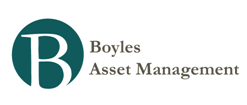Suing Wall Street Banks Never Looked So Shady - By Jonathan Weil
From February 25th.
Next time you see some company complain its “mark-to-market” losses aren’t real, remember this name: the Federal Home Loan Bank of Seattle. It used to claim that, too. And it couldn’t have been more wrong.
About a year ago, the government-chartered lender blamed accounting rules after it wrote down its portfolio of mortgage- backed securities by $304.2 million to reflect how much their fair-market values had fallen. While those declines counted against its earnings and regulatory capital, the bank said they were “well beyond any expected economic loss.”
The bank’s executives said they expected to lose a mere $12 million of principal over the life of the securities. That estimate proved far too hopeful, though.
The bank, one of 12 regional Federal Home Loan Banks that supply low-cost loans to about 8,000 member banks and finance companies, now says it expects about $311.2 million of credit losses on its portfolio. And in December, it filed lawsuits against 11 Wall Street underwriters, including Goldman Sachs Group Inc. and Morgan Stanley, seeking more than $3.9 billion of refunds on the securities, plus interest. You know the losses are real when the bank is suing to get its money back.
Yet there’s a far greater outrage here than this one bank’s unpleasant surprise. That would be what transpired in Congress and at the Financial Accounting Standards Board last year after the Seattle bank disclosed its rosy $12 million estimate, which soon took on a life of its own.
‘Disturbing’ Example
The bank became a poster child for everything supposedly wrong with mark-to-market accounting. At a March 12, 2009, congressional hearing, U.S. Representative Ed Perlmutter of Colorado cited the disparity between the bank’s writedown and its much smaller anticipated loss as “an example that really was disturbing.”
The congressman leading the hearing, Paul Kanjorski of Pennsylvania, pointed to a similar instance at the Federal Home Loan Bank of Atlanta. The bank reported an $87.3 million writedown on its mortgage-backed securities for the 2008 third quarter; however, it said it expected its actual losses would be only $44,000.
While that’s roughly equivalent to the losses from a modest studio condo foreclosure, Kanjorski didn’t question the tiny number, saying: “I find that accounting result to be absurd.”
“It fails to reflect the economic reality,” he said. “We must correct the rules to prevent such gross distortions.” Kanjorski, Perlmutter and other lawmakers told Bob Herz, the chairman of the FASB, that it needed to change its rules immediately so banks could show stronger earnings. The board, which fancies itself as an independent standard setter, complied a few weeks later.
Changing the Rules
The rest of the story: Last year when the Atlanta bank released its financial results for the third quarter, it said it had raised the credit-loss estimate to $263.1 million. (Here’s the math in case you missed it: $263.1 million > $44,000.)
The FASB rule change gave companies a new way to avoid counting paper losses from toxic debt securities in their earnings. Before 2009, whenever companies recorded writedowns on impaired securities that they labeled as held-to-maturity or available-for-sale, they had to run the full amounts through net income for any losses deemed to be “other than temporary.”
- Links
Yuval Harari on EconTalk (LINK) Related book: Sapiens: A Brief History of HumankindWhy Americans Don’t Trust the Fed - by Roger Lowenstein (LINK) Related book (comes out tomorrow): America's Bank: The Epic Struggle to Create the Federal...
- Jpmorgan Trading Loss May Reach $9 Billion
Losses on JPMorgan Chase’s bungled trade could total as much as $9 billion, far exceeding earlier public estimates, according to people who have been briefed on the situation. When Jamie Dimon, the bank’s chief executive, announced in May that the...
- Hussman Weekly Market Comment: Approaching The Eraser
Two months ago, I noted that the surprise resignation of Wells Fargo's Chief Financial Officer had caught the eye of a number of shareholders, who noted my comment several quarters ago that we could observe a wave of fresh risk aversion "at the point...
- Short Sales Resisted As Foreclosures Are Revived
Bank of America and GMAC are firing up their formidable foreclosure machines again today, after a brief pause.But hard-pressed homeowners like Lydia Sweetland are asking why lenders often balk at a less disruptive solution: short sales, which allow owners...
- Hussman Weekly Market Comment: Earning More By Setting Aside Less
Meanwhile, it is notable that the "favorable" earnings reported by J.P. Morgan and Bank of America in the first quarter were due to reduced provisions for credit losses - charges that are largely discretionary. In the fourth quarter of 2009, J.P. Morgan...

